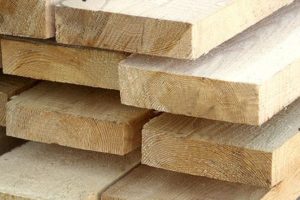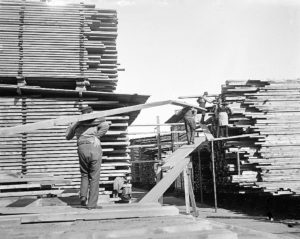(Here’s my talk at the night of discussion titled ‘What the hell is the point of museums?’ held at Medical Museion November 3, 2016 – see the program here – text in square brackets were added for this online version)
What (the hell) is the point of museums? I will give my shot by looking backwards on my experiences from being the Director of this place for more than a decade and a half. Not surprisingly, I have asked myself this question many times before: What’s the point of Medical Museion?
When I came here in August 1999 (it feels like yesterday!), when it was Medicinsk-Historisk Museum, I entered a shabby house with only a few public exhibition rooms (for the history of surgery, epidemics, etc.). Less than one percent of the collections were on display; the rest — one of the best collections of medical artefacts in the world —was in repositories that were closed to the public.

But back then it was a mess (and it has taken us almost 15 years to get order out of chaos, and I think it is pretty much in place now, thanks to Ion Meyer and his crew) and therefore one of the first obvious things to do was to open up this treasure trove to the public. Which we have now done over the last ten years, to a large extent thanks to Bente Vinge Pedersen who has produced the majority of >30 large and small exhibitions, almost all based on the rich collections.
Well, this is of course what every museum must do: Get the collections in order, and make a lot of exhibitions. But there was a special twist to it in our case. Because in the course of this work we began to articulate a critical attitude against some tendencies in the museum world — for example that
- designers and communication professionals tend to take over from the curators
- museums are turning more and more digital: install digital devices, interactives and touch screens, etc.
- museums want to become popular, draw large numbers of visitors and be immediately relevant for society tends whhile at the same time cutting down their basic research on material culture
- story-telling become more important than factual knowledge
Tendencies that all have the unfortunate consequence that they draw the attention away from the material artefacts.
Our clarion call against these tendencies was simple: ‘Back to the objects!’ It is material culture and things that is the key to the museum experience. Keeping and investigating artefacts is the basic rationale for a museum. And the acquisition of new artefacts is the life-blood of museums.
We began to discuss in these terms around 2006 when Camilla Mordhorst, who had an interest in rarity cabinets; Adam Bencard, who had a philosophical interest in the material body; and myself, who was fascinated by new biomedical technoscientific objects, read and discussed Sepp Gumbrecht’s notions of ‘meaning’ and ‘presence [see The Production of Presence: What Meaning Cannot Convey, 2004] – and translated his ideas into a museum context.
Since then we have continued to debate the consequences of thinking in terms of ‘presence’ over the last ten years, and we have learnt a lot:
- we learnt that design is good and important — but that it should enhance the attention to the artefacts, not draw attention away from them.
- we learnt that we need really good texts — but that texts should always be kept to a minimum. Texts shall enhance attention to artefacts, not draw attention away from them.
- we learnt to appreciate the need of visuals and images — but we’d rather prefer original material objects than pictures.
- we understood that story-telling can very be good, for example when a guide shows visitors around — but that telling stories is always secondary to the primary interaction with the things. (The objects are not props in a story.)
- and we came to the conclusion, that we would avoid digital devices, interactives and touch screens as much as possible.
- and we agreed that online access to digital images of objects is fine — but that we must make sure that the digital museum is not a substitute for the direct sensual interaction with the objects.
Which leads me to the most important experience – that we learnt to approach artefacts with all our senses. We learnt to see them by drawing them [thanks Lucy Lyons]. We learnt how it feels to handle objects without viewing them first, and we developed our tactile skills (is the object heavy, hard or soft?) [thanks Jan-Erik Olsén]. And we experimented with the olfactory sense: What does it smell? [thanks Anette Stenslund].
I think this ‘Back to the presence of objects’–approach has been the major connecting idea behind our exhibitions — and maybe behind the positive reception most of them have had (and by the way, thanks to Bikubenfonden for last year’s exhibition price!).
And thus my first take-home point for the debate this evening, namely that the point of museums is basically to collect, take care of, and investigate material stuff. Period. Everything else is secondary.
Or to put it differently: Museums can be entertaining, they can be learning institutions, they can be hubs for democracy education, and so forth. But if they forget their basic rationale — to be keepers and curators of material culture — they have no reason to exist.
So many other institutions and media are much better when it comes to entertainment, learning and education to democracy. Books, newspapers, magazines, television and radio do it better. Facebook, YouTube and Twitter do it much better. These media are already very good at utilizing visuals online — they tell great narratives — and they can do all we try to do much better than we can. Except investigate material things.
So I think it’s a mistake to duplicate what other institutions are doing much better than museums are. It’s a waste of resources and it’s a waste of our core assets.
My second take-home point has to do with our name, Medical Museion.
The modifier ‘medical’ is quite obvious; this museum has been associated with the University’s medical faculty for more than a century. But the background of the noun ‘Museion’ is more interesting.
My simple idea was that a museum ought to be a temple of the Muses, the old Greek goddesses who inspire poets, historians and philosophers. In Hellenistic times, the Mouseion was a place where you got inspired, inseminated with ideas – in contrast to the Renaissance museum where you collected things. Calling it a Museion therefore was for me a rhetorical means to emphasize that we had to imbue the museum with the attitude of the university. Or at least the ideal university.
Actually, when I came to this institution as a professor in history of medicine in 1999, I had one and only one ambition – to gather a group of PhD-students around a seminar table. The dream came true: I have had the privilege to have altogether ten of them over the years (some of them are here now), and also a handful of postdocs. But after a few years, I realized it would be a shame if they were isolated as a group of Researchers with capital R. They should really be integrated in the daily museum activities. They should collect and try their hands on the artefacts. And vice versa, the technical staff should get acquainted with research problems.
So we expanded the seminar, from being a research seminar only to deal with the whole spectrum of museum issues: Exhibition plans, conservation issues, collection logistics etc. And we invited a steady stream of guests, both academics and curators (and not least art practitioners) to come and share our investigation of things.
And most importantly, these seminars should be free and lively. Argument and interesting ideas was king. Formal position meant nothing.
I like to think about this as a defining characteristic of this house, i.e., that this attitude spread also outside the seminar room, so that the museum as a whole became a continuous, almost daily seminar, with open-ended debates, with a flat structure. And that you were allowed to play and try crazy things.
Thus my second take-home point for the discussion — that every museum should install a culture of curiosity, of investigation and a research mentality. A constant playing around with ideas and things. And that this culture of play [cf. Johan Huizinga, Homo Ludens] should be shared across the whole staff, including conservation staff, collection staff, exhibition curators and researchers.
I think it is a great mistake to have one’s eyes fixed on visitor numbers or relevance or usefulness to society. The key to success is the staff, and the key to the staff is to let the employees play freely as much as possible. If a serious culture of play can be installed, good exhibitions and raising visitor numbers (and perhaps prizes) will follow.
I would also have liked to say something about a third take-home point, namely about the problem that so many museums are fixated on the contemporary political and cultural landscape, that this makes us vulnerable to political interventions and rapidly changing ideological agendas, and that we should therefore instead focus on the long past and the very far future in order to keep our integrity as museums. But this would take another five minutes so I will stop here. (And besides, having two take-home points fits better with my conclusion.)
To conclude I would like to paraphrase the Enlightenment philosopher Immanuel Kant, who once famously said that “thoughts without content are empty, intuitions without concepts are blind.” [Critique of Pure Reason]
Or, in my museological version: Museums that don’t focus on material stuff and material things are empty – and museums that don’t encourage a playful attitude among the staff are blind.
And thus my answer to the question for the debate tonight: The point of museums is to play with material stuff.
 Det är svårare med hörselminnena. Jag har visserligen sparat ett magnetband med mormor och morfars röster på från början av 60-talet, men jag har inte nån gammal Tandberg att spela upp det på (och bandet är säkert avmagnetiserat nu). Jag föreställer mig dock att jag skulle känna igen deras röster om jag hörde dem. Och kan bli litet rädd för vilka minnen och upplevelser de mer än femtio år gamla rösterna vill sätta igång i mig.
Det är svårare med hörselminnena. Jag har visserligen sparat ett magnetband med mormor och morfars röster på från början av 60-talet, men jag har inte nån gammal Tandberg att spela upp det på (och bandet är säkert avmagnetiserat nu). Jag föreställer mig dock att jag skulle känna igen deras röster om jag hörde dem. Och kan bli litet rädd för vilka minnen och upplevelser de mer än femtio år gamla rösterna vill sätta igång i mig.

